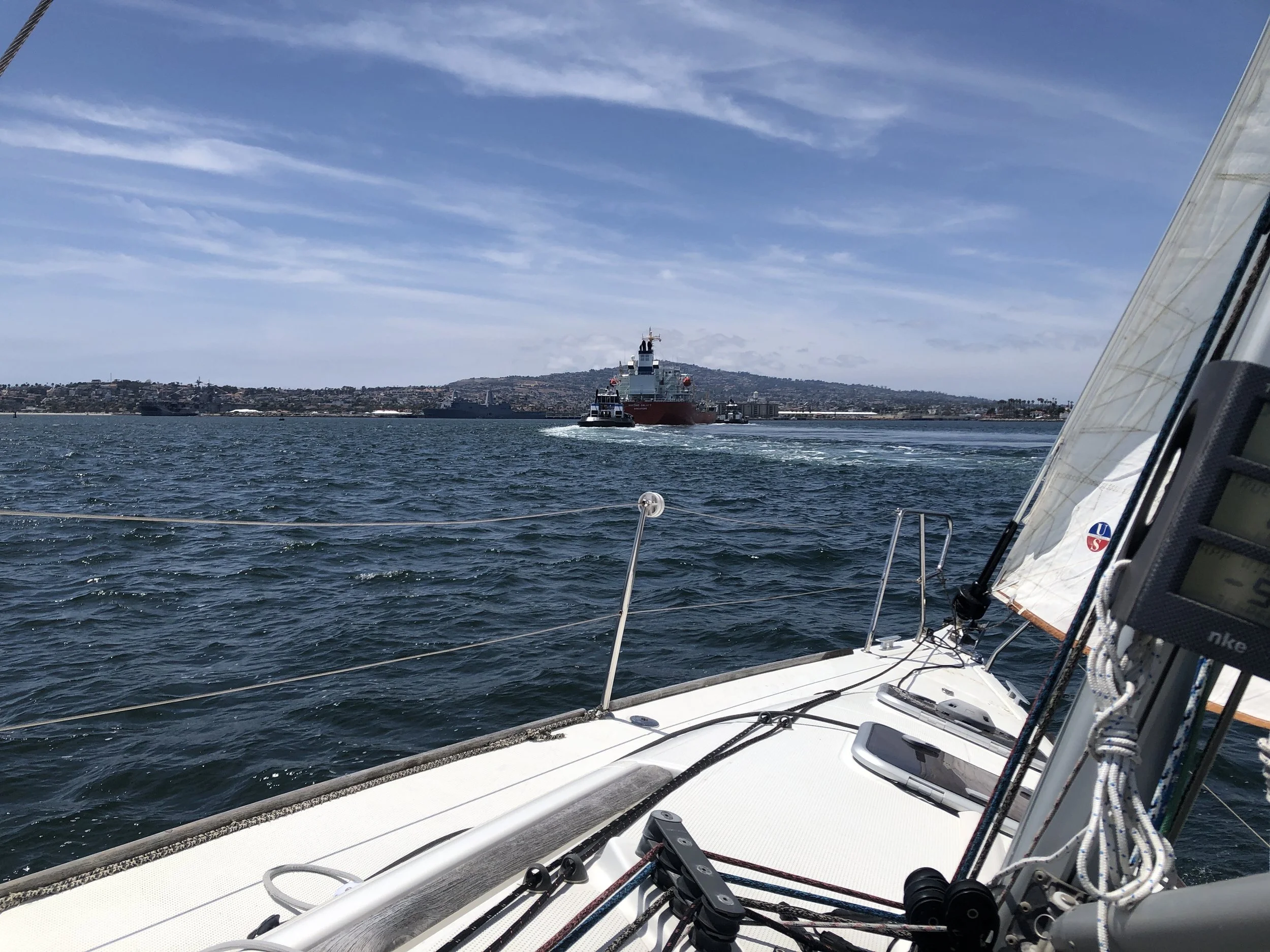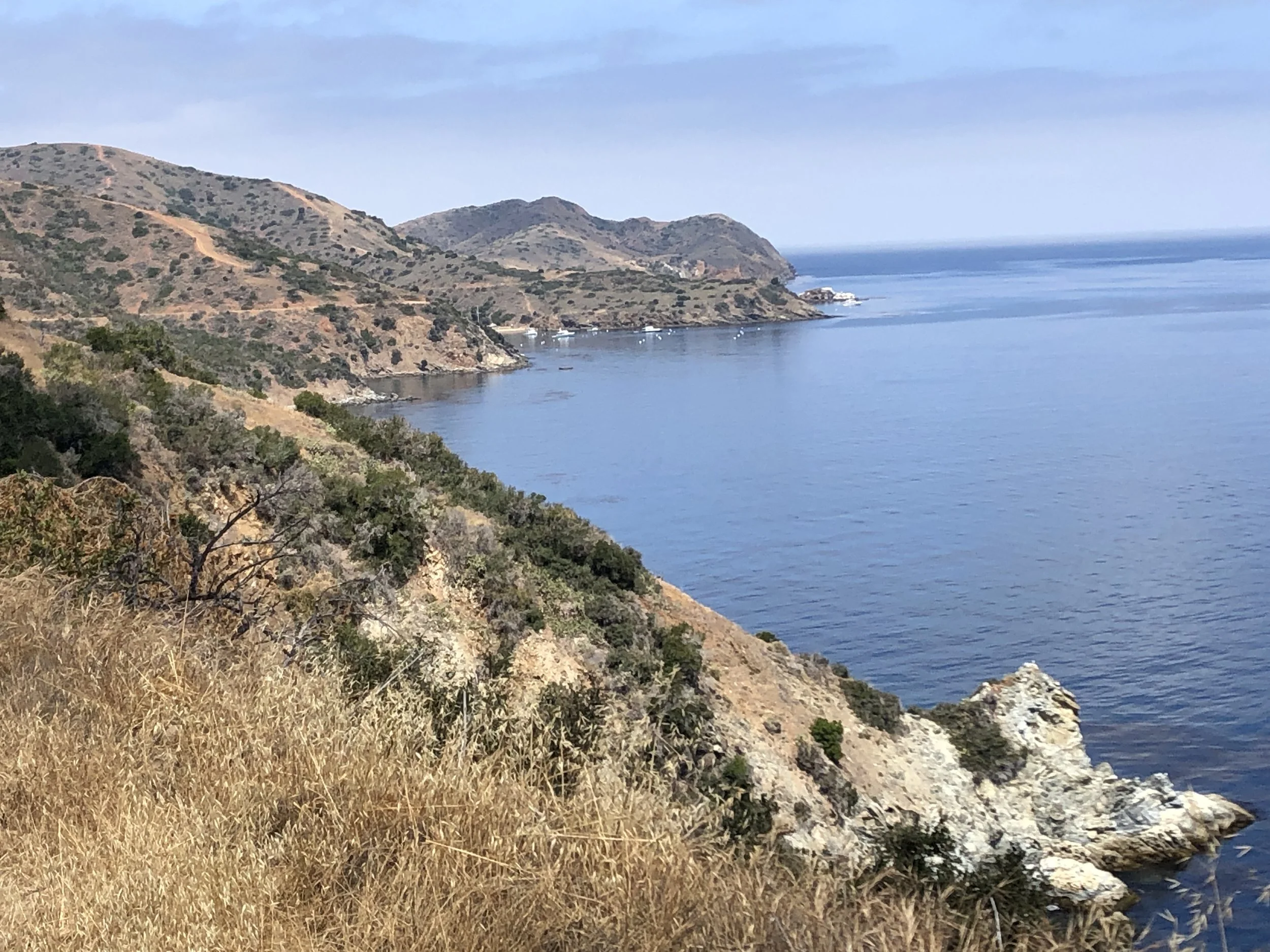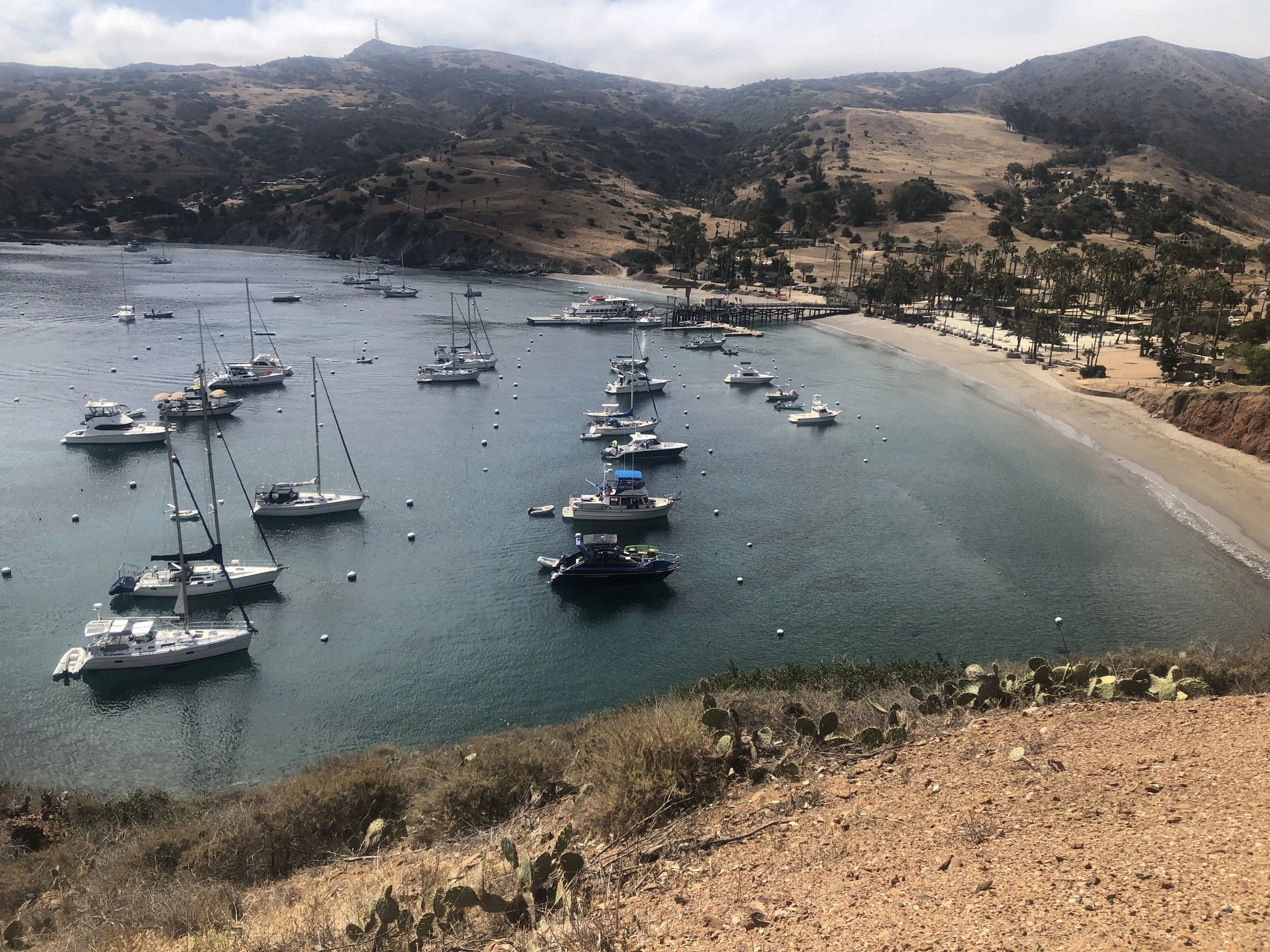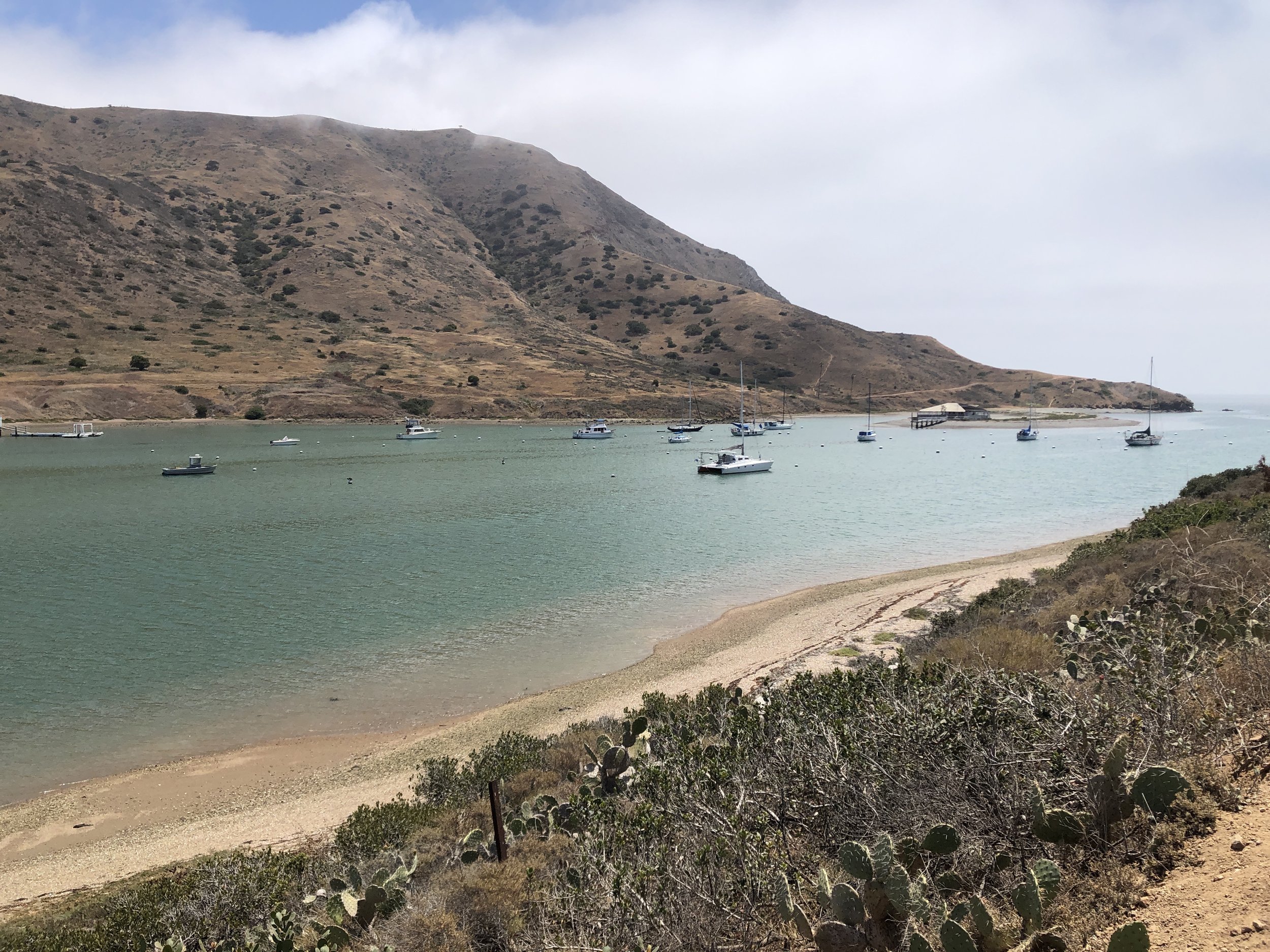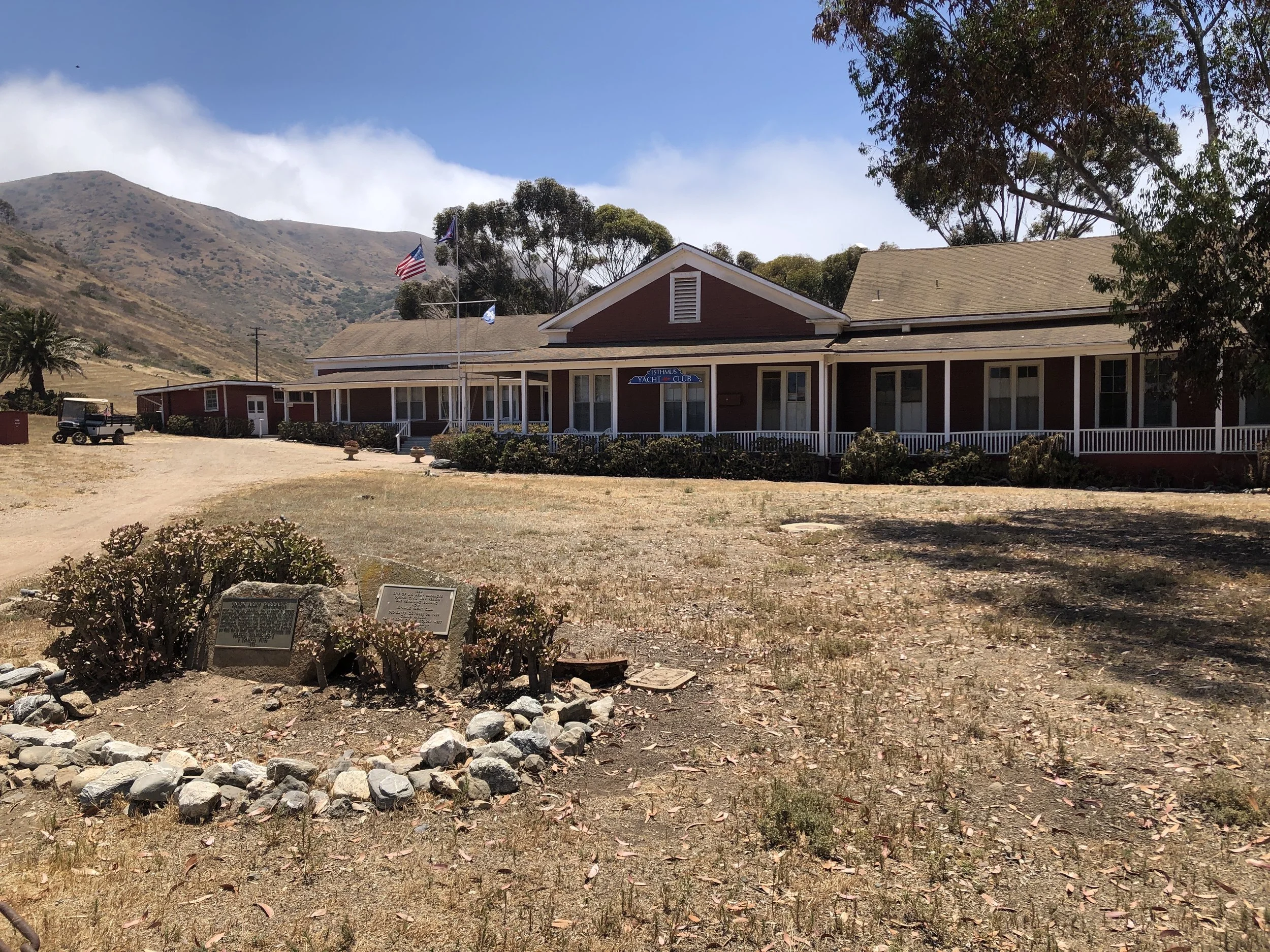California. Two Harbors: Catalina Island’s Second City
A favorite family destination when I was growing up was Catalina Island, located off the coast of Southern California. Although the distance between the mainland and the island is just 51 kilometers, it took three and a half hours by powerboat to reach Avalon Harbor, located near the island’s south end. A few years ago, I had a chance to relive those adventures with my brother who owns a 32-foot sailboat. We departed San Pedro for the Isthmus, a popular Catalina destination 29 kilometers northwest of Avalon. Part of a chain of eight islands that once formed an ancient offshore mountain range, Catalina’s rocky cliffs, sandy beaches, and rolling hills cover an area of almost 200 square kilometers. Thirty-five kilometers in length, the island is 13 kilometers across at its widest point and just 0.77 kilometers at its narrowest. With a population of 4,200 (90% of whom live in Avalon), the island is administratively part of Los Angeles County. The island’s other settlement is the unincorporated community of Two Harbors (population 298), located at the Isthmus.
Plants and animals found on the island migrated naturally or were introduced by people. Vegetation includes coastal scrub, chaparral, grassland, and oak woodland communities while fauna ranges from rattlesnakes to foxes, mule deer, and feral cats. There are also populations of larger mammals such as bison and African black buck that were transported to the island for making movies. Human occupation of Catalina extends back at least 7,000 years. Groups occupying the island included Chowigna, Guashna, and the Tongva who established a village at the Isthmus. Arriving in 1542, the Portuguese sailor Juan Rodríguez Cabrillo was the first European to set foot on Catalina. However, it was Spanish explorer Sebastian Viscaino who named the island in 1602 to honor Catholic Saint Catherine. Throughout the 18th and 19th centuries, Russian fur hunters stopped at the island in search of otters. By the 1830s, much of the island’s native American population had been forced to work on mainland ranches and farms. The island has been owned by individuals and organizations beginning with Thomas M. Robbins in 1846. In 1900 it was acquired by chewing gum magnate, William Wrigley, Jr. and for several years (1921-41 and 1946-51) Wrigley’s Chicago Cubs baseball team traveled there for spring training. Wrigley eventually deeded most of his land holdings to the nonprofit Catalina Island Conservancy.
The community of Two Harbors is located at Catalina’s narrowest point, between Isthmus Cove on the leeward (northern) side and Catalina (aka Cat) Harbor on the windward (southern) side. The Isthmus was first mapped by Father Antonio de la Asencion, a participant in Viscaino’s expedition. Isthmus Cove was initially known as Puerto de Santa Catalina and Cat Harbor as Ensenada (Spanish for “bay”). During the 1860s the area was mined for lead, zinc, and silver and in 1864 the Union Army sent 83 soldiers to establish a camp there to protect the harbor from an attack by forces loyal to the Confederacy. An early effort to develop the Isthmus began in 1899 when William Banning (1894-1919) proposed “Catalina City” as a rival to Avalon. The son of stagecoach magnate and Los Angeles Harbor developer Phineas Banning, William Banning planted eucalyptus trees, built a pier, and initiated projects to improve water and sanitation. Plans also called for the construction of a large hotel. Army barracks constructed at Two Harbors were used in the 1920s and 1930s to house movie crews and by personnel assigned to a U.S. Army Signal Corps radar station during WWII. In 1951, the former barracks building was repurposed as Isthmus Yacht Club. Over the years more than 500 movies, TV commercials, TV shows, and documentaries were filmed at the Isthmus. For example, in 1962 a Tahitian village was constructed for filming Mutiny on the Bounty. More recent movies filmed there include Jaws (1973), Waterworld (1995), and Amistad (1997).
Today, a house built in 1909 by Banning’s son, Joseph Brent Banning (1861-1920), offers a place to stay for overnight visitors. With twelve guest rooms, Banning House Lodge is a short uphill walk from the pier at Isthmus Cove. Although William Banning’s vision for a city was never realized, Two Harbors has become popular among scuba divers, saltwater fishing enthusiasts, yachters, and campers. Along with the lodge, there is a restaurant and general store. While visitors can reach Two Harbors by bus from Avalon, the largest number of tourists travel there by ferry from San Pedro Harbor.
Departing San Pedro in my brother’s sailboat, we set a course for Isthmus Cove. After passing a lighthouse on the breakwater, we watched the Rancho Palos Verdes Peninsula slowly disappear. The winds weren’t favorable, so we crossed Catalina Channel powered by the boat’s inboard motor. About half-way across the channel, we could see Catalina on the horizon and as we drew closer it was possible to distinguish Isthmus Cove. The Isthmus is flanked by Fourth of July Cove to the north and Fishermen’s Cove to the south. Boats entering Isthmus Cove must maneuver around hazards including Ship Rock, Bird Rock, and Isthmus Reef. Just 5,260 square meters in size, Bird Rock is the site of a survey monument established in 1975 and in 2014, it was advertised for sale ($875,000).
Since we were visiting off-season, it wasn’t difficult to find a mooring for tying up our boat. In lieu of arranging for the shore boat to pick us up, we paddled a rubber dinghy to shore. Unfortunately, one of our oars fell into the water and sank. Battling wind, we were able to reach a sandy beach adjacent to the harbor’s wooden pier using the remaining oar. Our next stop was for a beer on the deck of Harbor Reef Restaurant. Afterwards we took a ten-minute walk to Catalina (aka Cat) Harbor, passing Isthmus Yacht Club along the way. The yacht club is exclusive with just twenty-six total memberships and a long waiting list. In a wooded area near our route were two bison grazing on tall grass. Nearby were signs warning visitors not to approach bison.

